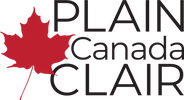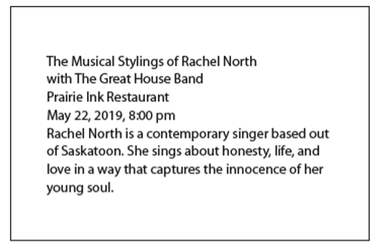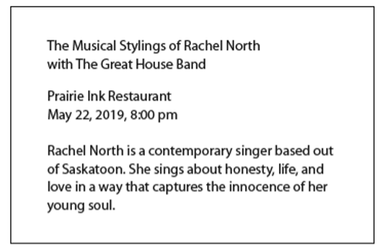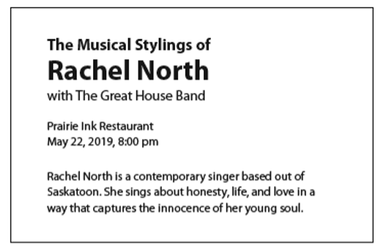Hello 2022!In this month’s edition of our newsletter, we are featuring an article by Michelle Boulton on how to use white space when designing your communication. This informative piece includes examples that demonstrate the impact of applying this plain language design technique in your work. As you read her article, we know you will want to learn more about Michelle. Therefore, this edition highlights Michelle Boulton as our featured member. Michelle is based in Saskatchewan, and she is a long-time plain language practitioner (in French and English) as well as a successful business owner. Michelle is a founding member of Plain Canada Clair and she works tirelessly on our behalf. Cheryl Stephens, our patron, has launched a petition directed to the auditor general of Canada asking for an audit of the government’s implementation of their clear communication policy. Please follow the link below to sign the petition. We encourage you to also share the link. Other information in this newsletter includes a reminder to start thinking about tax season and information about making a submission for Center for Plain Language‘s 2022 ClearMark Awards . We wish you all the best for 2022. Thank you/Merci, Jocelyn Pletz and Chantale Audet Professional developmentPlease go to our Plain Canada website to find information about our monthly online events. To register for an event, or to sign up for registration notifications, visit our Eventbrite page. On March 14, 2022, Eric E. Vigneault will make a French language presentation (details will be available soon). Make some space in your documentsBy Michelle Boulton If I could give you just one piece of plain design advice, it would be to add more white space to your documents. Whether you’re creating a report or writing an email, this simple design principle will make your content easier to read and understand. Why is white space so important?White space can be used to create emphasis and draw attention to important elements. Generous use of white space in your design will
How can I use white space more effectively?Start by breaking your text into smaller chunks and leave lots of room around the various elements so they stand out. But isn’t that just wasted space?No! White space is one of the most important elements of design. It literally creates space (air) on the page or screen, makes your content lighter and more inviting to read, and funnels your reader’s attention toward the key elements. How does that work?Let me demonstrate with this simple piece of text intended to advertise an event. In this first example, all of the necessary information is there, but it’s hard for the reader to find the various elements — date, time, location . . . Even the name of the performer gets lost. Let’s inject some space between the different elements. Already the text is easier to navigate and all we’ve done is add a little extra space. Let’s take it a step further. By simply making some elements a bit bigger, we highlight the most important information. See how simple that is? You don’t have to be a graphic designer to use plain design principles that make it easier for your readers to find what they need. Would you like to learn more? If you’re interested in learning more about using plain language and design to make your content more effective, please contact Michelle Boulton here. Featured member - Michelle BoultonBy Chantale Audet In this issue, we introduce Michelle Boulton, the coordinator of our organization. This plain language enthusiast has extensive experience in the field and has had an inspiring career. A path leading to plain languageMichelle graduated from the University of Saskatchewan with a degree in English. Although she initially envisioned a career as a journalist, her earliest work experiences steered her in a different direction—one that she did not imagine. Michelle’s various experiences and contracts have indeed directed her toward plain language and information design. Working at a student newspaper (where she was introduced to desktop publishing software), her multiple editing contracts in academic and other fields, as well as her job in the Instructional Design Unit at the University of Saskatchewan helped lay a strong foundation for her expertise in clear communication. It was Michelle’s time in the Instructional Design Unit that was the most significant for her. In fact, she says this experience was an eye-opener. As part of her work, she supported the person in charge of developing new standards for distance education courses. It was the 1990s, and distance learning was nothing like what we know today. She realized that key information in a document could be geographically positioned on the page to make it easier for the reader to find the key information and remember it. The way information is placed on a page plays an important role and it should not be placed randomly! This revelation transformed her work. Looking back, she sees that her first steps in information design led her to work in plain language, long before she knew anything about plain language. Life as an entrepreneur - 3c PublicationsMichelle founded her own company, 3c Publications, where she offers various writing, editing, and design services. Her contracts are varied: newsletters, reports, articles, etc. Michelle says information design is not an aesthetic consideration. It is, rather, about facilitating navigation through information. In addition, she emphasizes the importance of the plain language process and information design in her work. In any project, she says it is essential to bring together, from the beginning, all the contributors: writers, translators, graphic designers, etc. Michelle says it is necessary to strive to integrate the expertise of the various collaborators for the benefit of clarity. Because of her many contracts in the academic world, Michelle also specializes in the presentation of tables and graphs, which can often be difficult to read. She is currently developing an online course to teach people how to clearly present tables, charts, and graphs. Editing and advancing plain language in CanadaMichelle is a founding member of Editors Saskatchewan, a branch of Editors Canada. She also served for two years as the national president of Editors Canada. Michelle’s French roots make her a bilingual plain language expert. Many of her projects are bilingual, so she knows how to effectively combine both official languages. Her involvement and dedication to the advancement of plain language are undeniable. With Michelle at the helm of Plain Canada Clair, the promotion of plain language is in good hands! Patron's cornerPetition to demand plain language from governmentIf you've been on LinkedIn, you will have seen that Cheryl has launched a new petition. It asks the auditor general of Canada to audit the implementation of the government’s clear communication policy. Cheryl asks you to sign the petition and share this information with others: We demand plain language from government The federal Policy on Communications and Federal Identity, Section 4.3, says, “Government communications must be objective, factual, nonpartisan, clear, and written in plain language. The communications function entails more than simply providing or receiving information. The way in which the government delivers its communications affects the value of the information, how it is received by the public, and the credibility of its source. Tailoring messages to specific audiences increases the impact of how the information is received.” Fireside chatsCheryl also encourages you to join her for her new Fireside Chats on the first of every month (at noon Pacific). Go toEventbrite to learn more about how to participate. These sessions are open to everyone in the Plain Canada Clair community. Tax time is nearingTax time can be a positive experience for freelancers—organization and preparation (or the help of a professional) can make all the difference. One helpful resource is Make Sure It’s Deductible, Fifth Edition, by Evelyn Jacks. This book provides tax tips for running a small business in Canada and it is especially useful for those of us who are freelancing in the “gig” economy. As well, the Canada Revenue Agency has Liaison Officers who specialize in helping sole proprietors and small business owners, particularly those of us in the freelance world. Their websites offer many tips and helpful hints. Volunteer recognitionOver the next few months, we will use this space to recognize the team of volunteers who give their time to support Plain Canada Clair. If you are interested and available to volunteer with us, please email [email protected].Your help, even if it is only five hours a month, is always appreciated! ClearMark Awards (Center for Plain Language)ClearMark Awards recognize plain language communication created by North American organizations. Want to submit your work to the 2022 ClearMark Awards? They will begin accepting submissions on February 19. Check the link for updates!
|
Archives
May 2023
CategoriesSubscribe to our newsletter.
|
© COPYRIGHT 2021. All rights reserved. Tous droits réservés.




 RSS Feed
RSS Feed